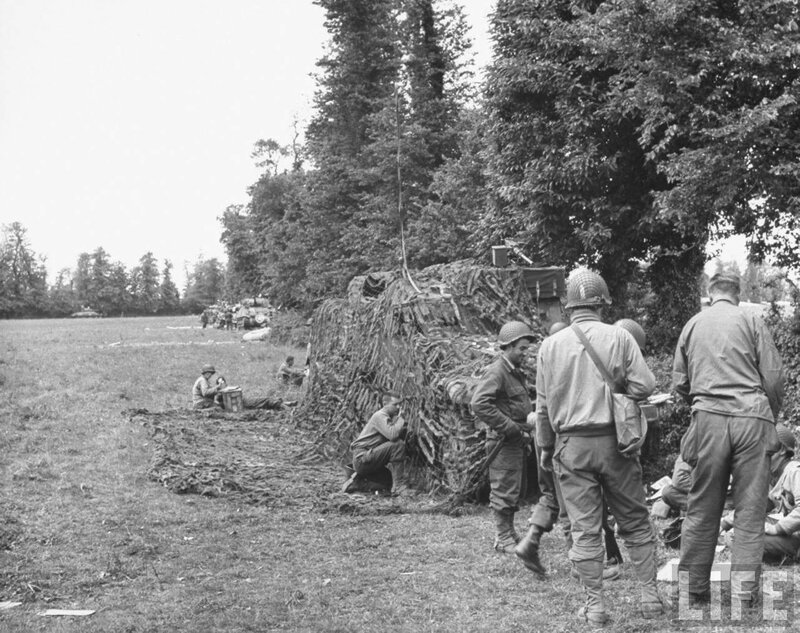How to install the app on iOS
Follow along with the video below to see how to install our site as a web app on your home screen.
Note: This feature may not be available in some browsers.
You are using an out of date browser. It may not display this or other websites correctly.
You should upgrade or use an alternative browser.
You should upgrade or use an alternative browser.
US military news, discussions and history
- Thread starter SvenSvensonov
- Start date
Fenrir
FULL MEMBER

- Joined
- Jul 14, 2015
- Messages
- 1,291
- Reaction score
- 0
- Country
- Location
Watch A B-1B Refuel And Thank The Tanker With A Gorgeous Burner Break

Swing-wings, a sleek and flowing fuselage, and four big GE-F101 turbofans pointing out the back: the B-1B’s silhouette is ominous to say the least. That silhouette is exactly what a tanker crew saw after refueling the “Bone” from their KC-135R Stratotanker, as seen in the video below.
Another cool part is seeing all the little pilot and fly-by-wire inputs on the control surfaces that allow the B-1 to stay in close formation with the tanker. Often times, when the B-1s are loading down with munitions as well as fuel during combat, they have to engage two of the jet’s four afterburners to a certain degree in order to remain in place behind the tanker, as you can see in this awesome image from our good friend Jaye Morton:


Swing-wings, a sleek and flowing fuselage, and four big GE-F101 turbofans pointing out the back: the B-1B’s silhouette is ominous to say the least. That silhouette is exactly what a tanker crew saw after refueling the “Bone” from their KC-135R Stratotanker, as seen in the video below.
Another cool part is seeing all the little pilot and fly-by-wire inputs on the control surfaces that allow the B-1 to stay in close formation with the tanker. Often times, when the B-1s are loading down with munitions as well as fuel during combat, they have to engage two of the jet’s four afterburners to a certain degree in order to remain in place behind the tanker, as you can see in this awesome image from our good friend Jaye Morton:

US Marines in the battle for the city of Sainte-Mère-Église; Normandy; 7 of June 1944








more 477768 - Десант "in action"








more 477768 - Десант "in action"
Moon
SENIOR MEMBER

- Joined
- Oct 27, 2014
- Messages
- 2,504
- Reaction score
- 2
- Country
- Location
Fenrir
FULL MEMBER

- Joined
- Jul 14, 2015
- Messages
- 1,291
- Reaction score
- 0
- Country
- Location
Do you know why Sven got banned??
He's on leave until January for a couple of reasons. He got married last month, so that covers July, but for the remain 5 months of the year his ban should cover his wife's pregnancy - and his helping make sure it's a pleasant experience for her. I expect he'll be back around February though, considering January would only be the 8th month Anna's (his wife) pregnancy.
He'll be back, it'll just take some time.
Moon
SENIOR MEMBER

- Joined
- Oct 27, 2014
- Messages
- 2,504
- Reaction score
- 2
- Country
- Location
He's on leave until January for a couple of reasons. He got married last month, so that covers July, but for the remain 5 months of the year his ban should cover his wife's pregnancy - and his helping make sure it's a pleasant experience for her. I expect he'll be back around February though, considering January would only be the 8th month Anna's (his wife) pregnancy.
He'll be back, it'll just take some time.
Awwwwww that's so sweet of him, meanwhile throughout my mom's pregnancy my dad was posted in Balochistan and he met me for the first time when I was three weeks old
AMDR
FULL MEMBER

- Joined
- Sep 28, 2014
- Messages
- 1,109
- Reaction score
- 16
- Country
- Location
US Navy Tests Printing Drones at Sea
US Navy Tests Printing Drones at Sea
Additive manufacturing (AM) has found a place in a vast number of different fields, including defense. While AM can’t make a soldier, it can make his job easier by providing support in the field. A 3D printer and access to some digital files gives the military flexibility in what “materiel” is required to be physically present during deployment.
The US Navy has been actively pursuing AM as a solution to logistical problems forsome time. The first solution to be unveiled is the Navy’s intention to produce 3D printed drones on ship. The ability to print drones while at sea can offer commanders a tactical advantage by allowing them to tailor a drone’s capabilities for the current mission.
The first test was on board the USS Essex. Digital plans were transmitted by satellite link, and fed into the 3D printer by sailors. The crew then took the printed parts and assembled them, including electronic parts (motors, radio, controller and a GPS unit) already on board.
The result was a drone equipped with a camera that offers Navy vessels improved intelligence capabilities when dealing with piracy, drug smuggling or rescues at sea. The drone can provide an overhead look at a ship, or zip around to the side that isn’t visible to monitor activities.
While promising, the program still has a number of problems to overcome. Tests need to be conducted to see how difficult it is to launch a small drone from a moving ship in a variety of weather and travel conditions. Additionally, researchers will need to investigate whether the variety of signals produced by a warship will interfere with the control and functionality of a drone.
Assuming the latter problems can be ironed out, it’s pretty easy to envision a time when every ship carries a 3D printer and the extra parts required to build drones. As technology improves, many of the electronic parts may also be printed, further reducing the amount of space taken up onboard.
US Navy Tests Printing Drones at Sea
Additive manufacturing (AM) has found a place in a vast number of different fields, including defense. While AM can’t make a soldier, it can make his job easier by providing support in the field. A 3D printer and access to some digital files gives the military flexibility in what “materiel” is required to be physically present during deployment.
The US Navy has been actively pursuing AM as a solution to logistical problems forsome time. The first solution to be unveiled is the Navy’s intention to produce 3D printed drones on ship. The ability to print drones while at sea can offer commanders a tactical advantage by allowing them to tailor a drone’s capabilities for the current mission.
The first test was on board the USS Essex. Digital plans were transmitted by satellite link, and fed into the 3D printer by sailors. The crew then took the printed parts and assembled them, including electronic parts (motors, radio, controller and a GPS unit) already on board.
The result was a drone equipped with a camera that offers Navy vessels improved intelligence capabilities when dealing with piracy, drug smuggling or rescues at sea. The drone can provide an overhead look at a ship, or zip around to the side that isn’t visible to monitor activities.
While promising, the program still has a number of problems to overcome. Tests need to be conducted to see how difficult it is to launch a small drone from a moving ship in a variety of weather and travel conditions. Additionally, researchers will need to investigate whether the variety of signals produced by a warship will interfere with the control and functionality of a drone.
Assuming the latter problems can be ironed out, it’s pretty easy to envision a time when every ship carries a 3D printer and the extra parts required to build drones. As technology improves, many of the electronic parts may also be printed, further reducing the amount of space taken up onboard.
AMDR
FULL MEMBER

- Joined
- Sep 28, 2014
- Messages
- 1,109
- Reaction score
- 16
- Country
- Location
DARPA’s Plan X to bring ‘military mindset’ to cyber-war
DARPA’s Plan X to bring ‘military mindset’ to cyber-war | ExtremeTech
Ask most “real” computer security experts, the guys and gals who have been cracking and/or protecting networks since before Windows were NT, and they’ll tell you the best way to protect a network is simply to know everything about it. They take pride in being able to quickly navigate arcade database structures and monitor access using only a text-based interface — but with virtually every organization of any real size now turning to computer security experts to protect their business, these sorts of security hardcores are getting washed out by snot-nosed millennials who think Unix is how you used to play Ubisoft games online.
That’s especially true in the military, which misses a good portion of the libertarian-minded hacking set right off the bat. What is the biggest military in the world to do, when one of the most important upcoming industries simply can’t provide the volume of talent they require to keep their operations safe? DARPA’s Plan X is an attempt to answer that question.
Plan X takes a very simple approach to solving the talent crisis: Rather than increasing the amount of talent being produced (this has been tried for several years), instead try simply lowering the amount of talent needed to do the job. The goal is to make basic monitoring of network security a whole lot more approachable, using an intuitive user interface and easily digested symbology to make it easy — and, more importantly, quick — to keep tabs on the source and type of any access to a particular network.
This includes, but is not limited to, interactive touchscreen interfaces, and Oculus-powered VR info-spaces. With easily digested information presented in a creative way, even someone with minimal training should be able to tell the difference between anomalous, non-threatening activity (like an automatic software update) and anomalous, threatening activity (like a cyberattack by Chinese government hackers). Plan X would make flags for malicious activity as obvious as possible, by changing the color of an icon or even animating it to pulsate menacingly.
Of course, in order to animate an icon differently, Plan X has to have already identified it as under attack, or at least questionable activity — meaning that Plan X is fundamentally an automated security effort with a heavy emphasis on human supervision. Once the threat is identified, all the operator would need to do is drag the appropriate response tool over the offending node in the network, and let Plan X do the rest.
Overall, DARPA wants to make cyber-warfare a lot more like “kinetic” warfare, the fast, aggressive style of conventional combat which the US has been slowly perfecting for several decades. DARPA describes it as “bringing the military operational mindset” to computer security, which seems to mean that basic network monitoring might soon be able to be farmed out to disinterested Privates, a cyber version of sentry duty. For a fighting force that prides itself on agility and adaptability, the sluggish helplessness they often display in the face of cyber-warfare threats is, evidently, quite galling.
DARPA recently held a “hackathon” to get security experts to help improve its security measures. These are the “real” security gurus mentioned above, and their contributions will go to improving the basic algorithms at the heart of Plan X. They mostly contributed ideas and software designed to identify malicious activity in a complex network. They’ve also collaborated with design firms to create novel (and media-friendly) data visualizations, like the conceptual demonstration shown off using the Oculus Rift.
The official project page for Plan X states somewhat defensively: “Plan X will not develop cyber offensive technologies or effects. National policymakers, not DARPA, will determine how the cyber capabilities developed under Plan X will be employed to serve the national security interests of the United States.” That’s certainly true, though by designing the platform they dictate how it can be deployed.
The bigger issue is: how long will the logic behind Project X continue to put value on having an under-trained recruit at the end of the decision-making process? If Plan X is suggesting the best response to a particular issue, and time is of the essence in stopping an infiltration, why not just let Plan X deploy the appropriate countermeasure automatically? Aside from providing someone to blame should something go wrong, why should they choose to continue to put up with human fallibility?
High level security will probably always have to involve a highly skilled, creative specialist working in real time to stop real-time threats. But basic network monitoring and simple, reflexive reactions don’t necessarily require that sort of expertise. If DARPA is successful in creating a set of algorithms that can make basic network security at least mostly automatic, the next big question will become when the general public will get its hands on the code.
DARPA’s Plan X to bring ‘military mindset’ to cyber-war | ExtremeTech
Ask most “real” computer security experts, the guys and gals who have been cracking and/or protecting networks since before Windows were NT, and they’ll tell you the best way to protect a network is simply to know everything about it. They take pride in being able to quickly navigate arcade database structures and monitor access using only a text-based interface — but with virtually every organization of any real size now turning to computer security experts to protect their business, these sorts of security hardcores are getting washed out by snot-nosed millennials who think Unix is how you used to play Ubisoft games online.
That’s especially true in the military, which misses a good portion of the libertarian-minded hacking set right off the bat. What is the biggest military in the world to do, when one of the most important upcoming industries simply can’t provide the volume of talent they require to keep their operations safe? DARPA’s Plan X is an attempt to answer that question.
Plan X takes a very simple approach to solving the talent crisis: Rather than increasing the amount of talent being produced (this has been tried for several years), instead try simply lowering the amount of talent needed to do the job. The goal is to make basic monitoring of network security a whole lot more approachable, using an intuitive user interface and easily digested symbology to make it easy — and, more importantly, quick — to keep tabs on the source and type of any access to a particular network.
This includes, but is not limited to, interactive touchscreen interfaces, and Oculus-powered VR info-spaces. With easily digested information presented in a creative way, even someone with minimal training should be able to tell the difference between anomalous, non-threatening activity (like an automatic software update) and anomalous, threatening activity (like a cyberattack by Chinese government hackers). Plan X would make flags for malicious activity as obvious as possible, by changing the color of an icon or even animating it to pulsate menacingly.
Of course, in order to animate an icon differently, Plan X has to have already identified it as under attack, or at least questionable activity — meaning that Plan X is fundamentally an automated security effort with a heavy emphasis on human supervision. Once the threat is identified, all the operator would need to do is drag the appropriate response tool over the offending node in the network, and let Plan X do the rest.
Overall, DARPA wants to make cyber-warfare a lot more like “kinetic” warfare, the fast, aggressive style of conventional combat which the US has been slowly perfecting for several decades. DARPA describes it as “bringing the military operational mindset” to computer security, which seems to mean that basic network monitoring might soon be able to be farmed out to disinterested Privates, a cyber version of sentry duty. For a fighting force that prides itself on agility and adaptability, the sluggish helplessness they often display in the face of cyber-warfare threats is, evidently, quite galling.
DARPA recently held a “hackathon” to get security experts to help improve its security measures. These are the “real” security gurus mentioned above, and their contributions will go to improving the basic algorithms at the heart of Plan X. They mostly contributed ideas and software designed to identify malicious activity in a complex network. They’ve also collaborated with design firms to create novel (and media-friendly) data visualizations, like the conceptual demonstration shown off using the Oculus Rift.
The official project page for Plan X states somewhat defensively: “Plan X will not develop cyber offensive technologies or effects. National policymakers, not DARPA, will determine how the cyber capabilities developed under Plan X will be employed to serve the national security interests of the United States.” That’s certainly true, though by designing the platform they dictate how it can be deployed.
The bigger issue is: how long will the logic behind Project X continue to put value on having an under-trained recruit at the end of the decision-making process? If Plan X is suggesting the best response to a particular issue, and time is of the essence in stopping an infiltration, why not just let Plan X deploy the appropriate countermeasure automatically? Aside from providing someone to blame should something go wrong, why should they choose to continue to put up with human fallibility?
High level security will probably always have to involve a highly skilled, creative specialist working in real time to stop real-time threats. But basic network monitoring and simple, reflexive reactions don’t necessarily require that sort of expertise. If DARPA is successful in creating a set of algorithms that can make basic network security at least mostly automatic, the next big question will become when the general public will get its hands on the code.
AMDR
FULL MEMBER

- Joined
- Sep 28, 2014
- Messages
- 1,109
- Reaction score
- 16
- Country
- Location
US Army seeks Stinger-based defence against cruise missiles
US Army seeks Stinger-based defence against cruise missiles - IHS Jane's 360
The US Army issued a request for information (RfI) for a Raytheon FIM-92 Stinger-based air defence system to counter cruise missiles on 4 August.
The RfI, which was posted on the Federal Business Opportunities website, calls for sources with the capability to provide engineering services in support of the Stinger missile in relation to the development of the Cruise Missile Defense Systems (CMDS) for both United States and Foreign Military Sales (FMS) customers.
As highlighted in the RfI, the Stinger is a short-ranged fire-and-forget shoulder-launched man-portable air defence system (MANPADS) designed to provide point-defence for ground forces against attack or observation by low-flying unmanned aerial vehicles (UAVs), helicopters, and fixed-wing threats out to 4.5 km.
The missile currently utilises a high-explosive, hit-to-kill warhead with a contact fuze, and can be fired from a range of platforms, including ground vehicles, UAVs, and helicopters. While no configuration has been disclosed, in the CMDS role it will be either a static or mobile ground-based system.
Having first entered service in 1981, the Stinger is now in its Advanced FIM-92E Stinger Block 1 configuration. A FIM-92E Block 2 configuration with an improved infrared/ultraviolet seeker that could defeat low-signature cruise missiles was shelved not long after engineering and manufacturing development was begun in 2000.
The RfI provides no details on the configuration of the proposed CMDS, or if it will be a mobile vehicle-based or a static solution. No details of timelines, numbers, or contract values were released either.
More than 44,000 Stinger missiles have been delivered to US forces and 17 export customers, with Raytheon claiming a more than 90% success rate in over 1,500 tactical firings, resulting in more than 270 kills against helicopters and fixed-wing aircraft. Besides the US Army, customers include Germany, India, Italy, Japan, Lithuania, Qatar, South Korea, Taiwan, and Turkey. On 4 July, the Latvian government confirmed to IHS Jane's that it too is to buy the Stinger system, with a procurement programme commencing in 2016.
The identity of the potential FMS customers for the Stinger-based CMDS has not been revealed.
US Army seeks Stinger-based defence against cruise missiles - IHS Jane's 360
The US Army issued a request for information (RfI) for a Raytheon FIM-92 Stinger-based air defence system to counter cruise missiles on 4 August.
The RfI, which was posted on the Federal Business Opportunities website, calls for sources with the capability to provide engineering services in support of the Stinger missile in relation to the development of the Cruise Missile Defense Systems (CMDS) for both United States and Foreign Military Sales (FMS) customers.
As highlighted in the RfI, the Stinger is a short-ranged fire-and-forget shoulder-launched man-portable air defence system (MANPADS) designed to provide point-defence for ground forces against attack or observation by low-flying unmanned aerial vehicles (UAVs), helicopters, and fixed-wing threats out to 4.5 km.
The missile currently utilises a high-explosive, hit-to-kill warhead with a contact fuze, and can be fired from a range of platforms, including ground vehicles, UAVs, and helicopters. While no configuration has been disclosed, in the CMDS role it will be either a static or mobile ground-based system.
Having first entered service in 1981, the Stinger is now in its Advanced FIM-92E Stinger Block 1 configuration. A FIM-92E Block 2 configuration with an improved infrared/ultraviolet seeker that could defeat low-signature cruise missiles was shelved not long after engineering and manufacturing development was begun in 2000.
The RfI provides no details on the configuration of the proposed CMDS, or if it will be a mobile vehicle-based or a static solution. No details of timelines, numbers, or contract values were released either.
More than 44,000 Stinger missiles have been delivered to US forces and 17 export customers, with Raytheon claiming a more than 90% success rate in over 1,500 tactical firings, resulting in more than 270 kills against helicopters and fixed-wing aircraft. Besides the US Army, customers include Germany, India, Italy, Japan, Lithuania, Qatar, South Korea, Taiwan, and Turkey. On 4 July, the Latvian government confirmed to IHS Jane's that it too is to buy the Stinger system, with a procurement programme commencing in 2016.
The identity of the potential FMS customers for the Stinger-based CMDS has not been revealed.
Fenrir
FULL MEMBER

- Joined
- Jul 14, 2015
- Messages
- 1,291
- Reaction score
- 0
- Country
- Location
The Helo Dunker prepares Marines for helicopter crashes over a body of water. They start with air tanks and goggles and to complete the training, they must pass this challenge with no air and black out goggles.














AMDR
FULL MEMBER

- Joined
- Sep 28, 2014
- Messages
- 1,109
- Reaction score
- 16
- Country
- Location
US Army to acquire enhanced MH-47G Block 2 Chinooks
US Army to acquire enhanced MH-47G Block 2 Chinooks - IHS Jane's 360

The US Army is set to receive eight new-build MH-47G Chinooks by the end of the year, the first of which is seen here outside the company's production facility in Philadelphia. The service wants to renew production once these deliveries are complete to replace some or all of its 61 remanufactured MH-47Gs with an enhanced Block 2-standard platform.
The US Army is looking to renew production of the Boeing MH-47G Chinook special mission helicopter in an upgraded Block 2 configuration, it disclosed on 3 August.
With production of the final eight Block 1 MH-47Gs set to be complete by the end of the year, the US Army Aviation Integration Directorate is proposing the resumption of production after this date to deliver an undisclosed number of additional MH-47G helicopters in a Block 2 configuration, according to a solicitation posted on the Federal Business Opportunities (FedBizOpps) website.
The US Army Special Operations Command (USASOC) currently fields 61 remanufactured Block 1 MH-47Gs (62 were delivered - 35 CH-47Ds, nine MH-47Ds and 18 MH-47Es - although one was lost on operations in Afghanistan). The USASOC is to receive the additional eight new-build MH-47Gs by the end of 2015 to offset the fleet's high operational tempo.
The army is known to be looking at options for replacing some or all of its remanufactured Block 1 MH-47Gs with new-build airframes, and it is this requirement that the solicitation posted on FedBizOpps site likely pertains to. Boeing deferred questions related to the solicitation to the US Army, which did not respond to a request for information by the time of publication.
Derived from the baseline CH-47F heavy-lift Chinook, the MH-47G is a specialist special-mission platform that features double-capacity 'fat' fuel tanks, an in-flight aerial refuelling probe, a digital advanced flight control system, and classified sensors and electronic warfare kits specified by SOCOM.
According to the solicitation, rather than build more of the same Block 1 standard helicopters, the army is looking to integrate a Block 2 upgrade into its new MH-47Gs. Speaking to reporters at the company's Philadelphia plant earlier this year, Boeing officials said that the Block 2 enhancements for both the MH-47G and CH-47F helicopters were still being defined, but that they will likely be based on already existing technologies.
One option being proposed by the company is the Advanced Chinook Rotor Blade (ACRB). Still under development, the ACRB is not a flat blade as currency fitted, but features lots of geometry and a new asymmetric aerofoil to increase the lift by approximately 900 kg per blade (5,400 kg for the helicopter). An interesting design criterion of this blade is that the first 45 cm, where it attaches to the hub, is identical to the old blade for easy retrofit (the ACRB is also made of the same materials as the old blade). Boeing said that the ACRB should be ready for fielding in about 2019, raising the baseline CH-47F helicopter's current payload from 10,886 kg to 16,286 kg.
The Block 2 upgrade is expected to be fielded by the US Army in the early 2020s, although this will be dependent on the government's acquisition funding process, and other factors. Once in service, the army's earlier Block Chinooks will likely be upgraded to the Block 2 configuration for a common standard across the fleet.
US Army to acquire enhanced MH-47G Block 2 Chinooks - IHS Jane's 360
The US Army is set to receive eight new-build MH-47G Chinooks by the end of the year, the first of which is seen here outside the company's production facility in Philadelphia. The service wants to renew production once these deliveries are complete to replace some or all of its 61 remanufactured MH-47Gs with an enhanced Block 2-standard platform.
The US Army is looking to renew production of the Boeing MH-47G Chinook special mission helicopter in an upgraded Block 2 configuration, it disclosed on 3 August.
With production of the final eight Block 1 MH-47Gs set to be complete by the end of the year, the US Army Aviation Integration Directorate is proposing the resumption of production after this date to deliver an undisclosed number of additional MH-47G helicopters in a Block 2 configuration, according to a solicitation posted on the Federal Business Opportunities (FedBizOpps) website.
The US Army Special Operations Command (USASOC) currently fields 61 remanufactured Block 1 MH-47Gs (62 were delivered - 35 CH-47Ds, nine MH-47Ds and 18 MH-47Es - although one was lost on operations in Afghanistan). The USASOC is to receive the additional eight new-build MH-47Gs by the end of 2015 to offset the fleet's high operational tempo.
The army is known to be looking at options for replacing some or all of its remanufactured Block 1 MH-47Gs with new-build airframes, and it is this requirement that the solicitation posted on FedBizOpps site likely pertains to. Boeing deferred questions related to the solicitation to the US Army, which did not respond to a request for information by the time of publication.
Derived from the baseline CH-47F heavy-lift Chinook, the MH-47G is a specialist special-mission platform that features double-capacity 'fat' fuel tanks, an in-flight aerial refuelling probe, a digital advanced flight control system, and classified sensors and electronic warfare kits specified by SOCOM.
According to the solicitation, rather than build more of the same Block 1 standard helicopters, the army is looking to integrate a Block 2 upgrade into its new MH-47Gs. Speaking to reporters at the company's Philadelphia plant earlier this year, Boeing officials said that the Block 2 enhancements for both the MH-47G and CH-47F helicopters were still being defined, but that they will likely be based on already existing technologies.
One option being proposed by the company is the Advanced Chinook Rotor Blade (ACRB). Still under development, the ACRB is not a flat blade as currency fitted, but features lots of geometry and a new asymmetric aerofoil to increase the lift by approximately 900 kg per blade (5,400 kg for the helicopter). An interesting design criterion of this blade is that the first 45 cm, where it attaches to the hub, is identical to the old blade for easy retrofit (the ACRB is also made of the same materials as the old blade). Boeing said that the ACRB should be ready for fielding in about 2019, raising the baseline CH-47F helicopter's current payload from 10,886 kg to 16,286 kg.
The Block 2 upgrade is expected to be fielded by the US Army in the early 2020s, although this will be dependent on the government's acquisition funding process, and other factors. Once in service, the army's earlier Block Chinooks will likely be upgraded to the Block 2 configuration for a common standard across the fleet.
Similar threads
- Replies
- 60
- Views
- 2K
- Replies
- 0
- Views
- 285
- Replies
- 20
- Views
- 1K
Latest posts
-
-
-
Pakistan military officer sues Adil Raja for defamation in unprecedented UK action
- Latest: muhammadhafeezmalik
-
Pakistan Affairs Latest Posts
-
Pakistan military officer sues Adil Raja for defamation in unprecedented UK action
- Latest: muhammadhafeezmalik
-
-


















